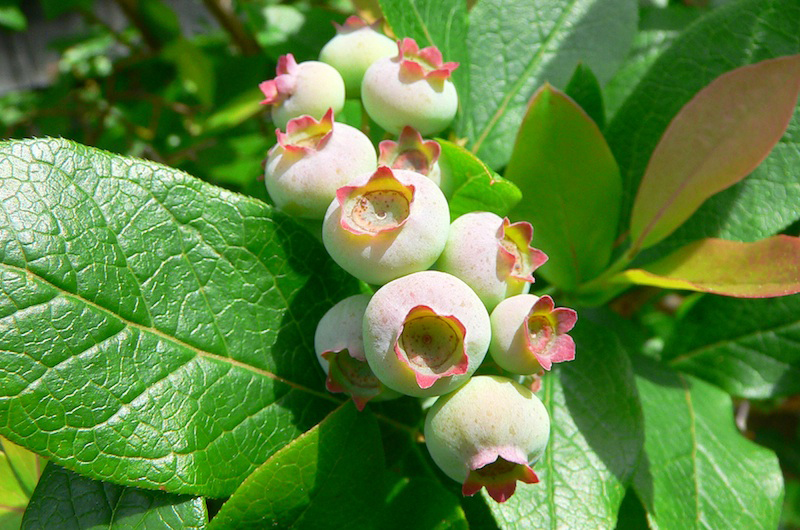This is the tale of a marriage, a home, and a berry patch. All three happened synchronously in a whirlwind stretch of 2007, when Stacy San Severino and I tied the knot in June and moved into our new house in Chilmark in mid-August. Together with her three young children (Henry, eleven, and identical twin daughters Ruby and Nina, seven), we tumbled into our new home after a summer spent at my mother’s house while our mid-sized modular was being constructed. For weeks, boxes sprawled around us as we assembled Ikea furniture and settled into our new residence. In short order, I found myself a new homeowner, a stepparent, and husband to a beautiful, brilliant, and sharply opinionated woman.
My first introduction to landscape decision-making came when I decided to postpone planting a lawn until the spring and make do with the sand surrounding the lot. Several days later, I spied Gilbert, my black-and-white cat, squatting in the yard and relieving himself. I walked outside and realized the entire yard was peppered with cat droppings. I was living in a giant litter box. That afternoon I called a landscaper. Within a week, we had a lawn planted.
Ninety-nine percent of the landscaping decisions I left to Stacy. Of the two of us, she has the greener thumb and sharper eye. She also has stronger opinions; she can be delighted by certain varieties of hydrangeas, yet irritated by the ‘Nikko Blue’ kind. To me, they’re all pretty flowers.
My 1 percent’s worth was for my berry patch. Throughout the construction of the house, I watched dream elements get tossed aside like sandbags from a hot air balloon as hard budgetary realities hit. Wood stove: gone. Bedroom skylight: gone. In-house Bose surround-sound speaker system: Why belabor the point? The lowest moment came when the excavator, an individual of dubious competence and scruples, attempted to jack me for an additional $47,000 over the initial estimate. Even after negotiating a lower price, backed up by the threat of a lawsuit, I was in no position to afford grace notes and frills on the home. The berry patch was my one unsurrendered dream.
Call it unmasculine, but I’ve always delighted in picking berries. As a teenage camper at Camp Walt Whitman in New Hampshire, I spent hours browsing the blueberry patches in Priestley’s fields, a stretch of abandoned farmland on the camp’s perimeter. Finding a wild patch of blackberries or raspberries while hiking the Martha’s Vineyard Land Bank trails is one of the joys of Island life. Growing my own patch at my new home was a small dream come true.
The first decision in the spring of ’08 was where to place the patch. Stacy was already planting trees and shrubs around the property, and Murphy’s Law dictated that if I chose a spot without consulting her, it would be right where she intended to plant some other greenery.
“Where should I put the berry patch?” I asked one morning.
“Anywhere you like,” she replied.
I poked around and found a square spot next to the house between the edge of the front porch and the cement basement window-well. That week I ordered plants online and soon after received several packages filled with clumps of stringy roots and clipped stems that promised to become raspberries, blackberries, strawberries, and blueberries. I tilled the ground, planted the roots, watered them, and was delighted several weeks later to see vivacious green shoots sprout out of the drab stems. I called Stacy over to behold the glory of new life.
“Not bad,” she said.
Then she scrunched up her nose and added, “I don’t like the spot. It’s too close to the house.”
I sputtered. Hadn’t she said anywhere was fine?
I held onto my conviction that I was right, she was wrong, and I was just another victim of female fickleness. The next day, Dwayne Costelos, a veteran carpenter who was putting some finishing touches on the house, looked at the patch and said, “You’re going to want to move those raspberries. You don’t want those growing by the house. They’ll spread like crazy and scratch up the wood.”
Stacy gave me a satisfied smile and walked into the house, leaving me with the dim prospect of having to uproot and replant the raspberries. I did what any self-respecting amateur would do: I put it off until next year.
There are two ways to grow a berry patch. One is to be a scientific cultivator, paying meticulous attention to soil pH, drainage, fertilizer, and other horticultural details. Martha’s Vineyard has a mish-mash of soils spread across the Island from its ancient glacial heritage. These soils range from dense clay and pebbled sand pits to rich loam, each requiring different strategies. The Massachusetts Fruit Growers Association, the New England Vegetable and Berry Growers Association, the University of Massachusetts Fruit Program, and other fine associations offer a wealth of information and resources for the methodical cultivator.
Then there’s the casual grower who takes more of a free-form, plant-it-and-let-it-grow approach. I’ve stumbled across raspberry patches in the woods dripping with sumptuous, juicy fruit without the benefit of anyone fussing about soil chemistry. With my patch, I opted to water regularly, provide love, and let nature take its course.
As weeks passed and spring gave way to summer, the berry plants (still in their original location) thickened, lengthened, and began sprouting green knobs that ripened into fruit. On the whole, the let-’em-grow approach worked, though I paid too little attention to pruning; when excess branches are eliminated, more energy goes to the fruit-bearing limbs. This laxness cost in terms of yield, but there was still enough fruit to make the project a success. The crowning moment came one afternoon when Ruby plucked a red strawberry from the patch, took a bite, broke into a wide cherubic grin, and said, “That’s the best strawberry I’ve ever had in my life!”
She may have had only seven years’ experience to make the call, but at that moment I felt as though all of my recent life changes were as right as anything could ever be.
A berry-planting primer
We might think of berry bushes as petite plants, but they can get large – highbush blueberry bushes can grow six feet wide and twelve feet tall, and rabbiteye blueberry bushes as high as fifteen feet. Raspberry and blackberry bushes spread rapidly, so think through where to plant to avoid future complications. Canes planted too close to a house can scratch up against the wood or spread prickers through gentler garden beds.
Berry bushes typically benefit from early-spring planting. Most prosper in any kind of garden soil with good drainage. Blueberries do best in acidic soil, with a pH between 4.5 and 5.5. You can lower alkaline and increase acidity by mulching with oak leaves, peat moss, and pine needles. Raspberries and blackberries have shallow root systems, so weeding around their base will reduce competition for nutrients in the soil. They should be spaced six to twelve feet apart to allow air to circulate around the plants. A well-cared-for raspberry patch can produce fruit for ten years.
Strawberries come in many varieties, some of which have been bred to be virus-free and are a good choice to avoid problems later. Gardeners can choose plants that are June bearing (one crop in the late spring), ever bearing (one crop in the spring and another in the fall), and day-neutral (fruit bearing throughout the growing season). The more sun the plants get, the more they will produce. Good soil drainage is critical, since strawberries fare poorly with drought or sitting water. Strawberries prosper in soil with a pH between 5.0 and 7.0. If you are serious about getting the most from your berry patch, a professional soil test is a good option; the University of Massachusetts Amherst (www.umass.edu/soiltest) does pH testing and more.







